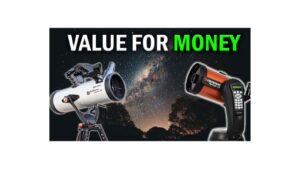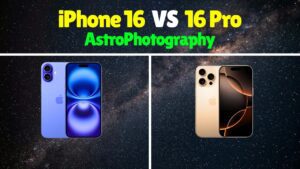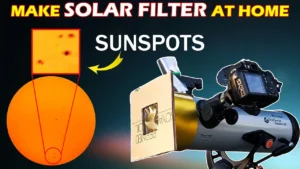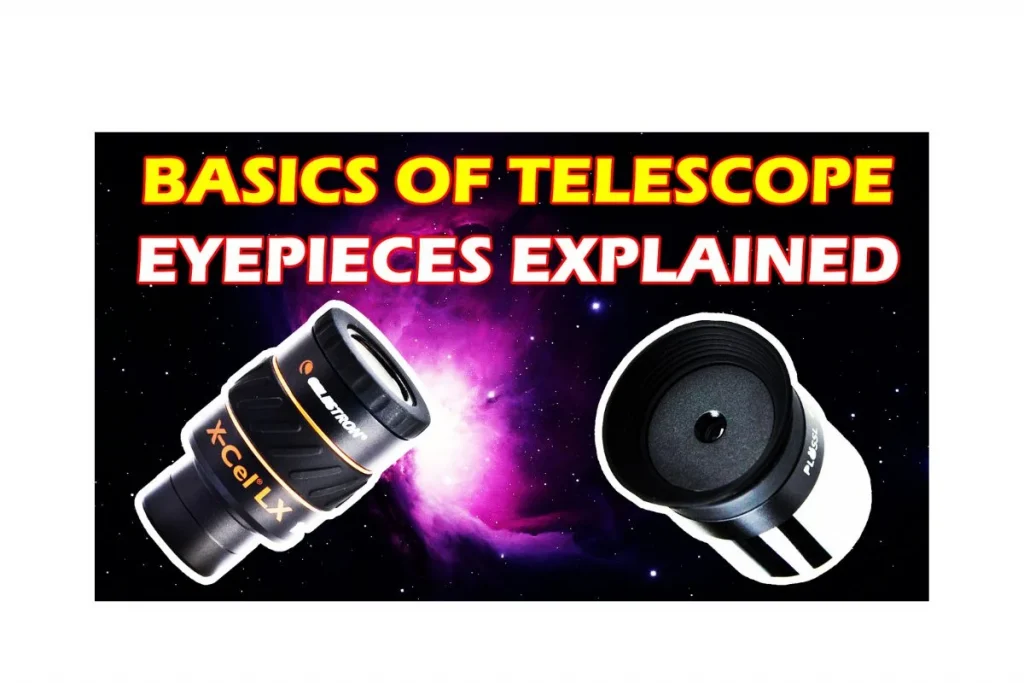
If you are considering buying a new telescope then at some point in your astronomy journey you will need to buy some eyepieces to get the best results. When buying a telescope, the aperture size is one of the most important factors. But, if you want to get the most out of your telescope then you also need better eyepieces.
“Your telescope is as good as its eyepiece is.”
Important parameters for telescope eyepieces
During stargazing, you can’t see the planets and galaxies with the same magnification. For example, let’s say you have a Celestron 8SE telescope. Now with this telescope, you can observe planets and some deep space objects. But for seeing the planets and deep space objects you cannot use the same eyepiece. If you use the planet’s eyepiece for deep space, then it might not give excellent results for deep space & vice versa.
So, choosing an eyepiece is very important to get the most out of your telescope. When you buy a cheaper telescope, the eyepieces which come with it are not of the best quality. But these telescopes do get the job done.
Sometimes by just changing the eyepiece, you get sharper and better images of the night sky, which might make you feel like you bought a new telescope. So, choosing the right eyepiece is very important.
While choosing an eyepiece you need to consider its focal length, eye relief, field of view, barrel size, and exit pupil.
Focal length or magnification
This is also known as the power of an eyepiece. More magnification means a higher power eyepiece and vice versa. Your telescope collects the light and the magnification is done by an eyepiece. Just like your telescope has a focal length, similarly, your eyepiece also has a focal length. To calculate the total magnification of an eyepiece the simple formula is “focal length of telescope / focal length of an eyepiece”.
Focal length of a telescope
E M = ————————————
Focal length of an eyepiece
Let’s say, you have a telescope that has a focal length of 2000mm and you are using a 10mm eyepiece.
Then your highest magnification can be. 2000/10 =200X
But when you use a 25mm eyepiece then the highest magnification you get is 2000/25 = 80X.
While choosing your eyepiece you should keep magnification between 40 to 50 times per inch of the telescope’s aperture. That means if you have a 6-inch aperture telescope then your maximum magnification should be between 240X to 300X.
If you live in an area where the skies are very clear then you can go for 50 to 60 times magnification per inch.

Eye relief
What exactly means eye relief?
Eye relief is the distance between the eyepiece and your eyes. The higher focal length of an eyepiece has higher eye relief & the lower focal length of an eyepiece usually has lower eye relief.
For example, if you are using a 10mm lens that has a 5mm eye relief then it is very difficult for someone with glasses to see a clear image through the telescope.
Similarly, if you are using a 40mm eyepiece that has 20mm eye relief it is easier to use.
So, if you are someone who wears glasses, then eye relief is one of the important factors you should consider while buying an eyepiece.
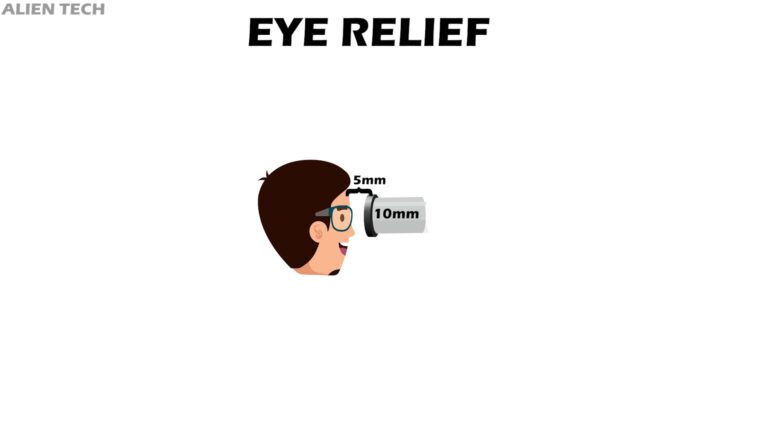
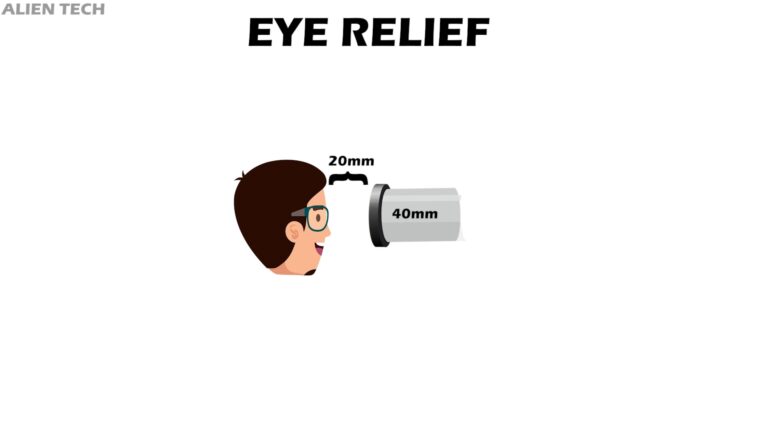
Field of view
Eyepieces not only have focal length but also have an apparent field of view. It is measured in degrees. It tells you the width of the sky your eyepiece can cover while focusing. Eyepieces have two fields of view.
Apparent field of view & True field of view
The apparent field of view is the angle of the view through the eyepiece before it is paired up with a telescope. Marketers use this field of view to advertise these eyepieces. But you are not going to look just through your eyepiece without pairing it with the telescope.
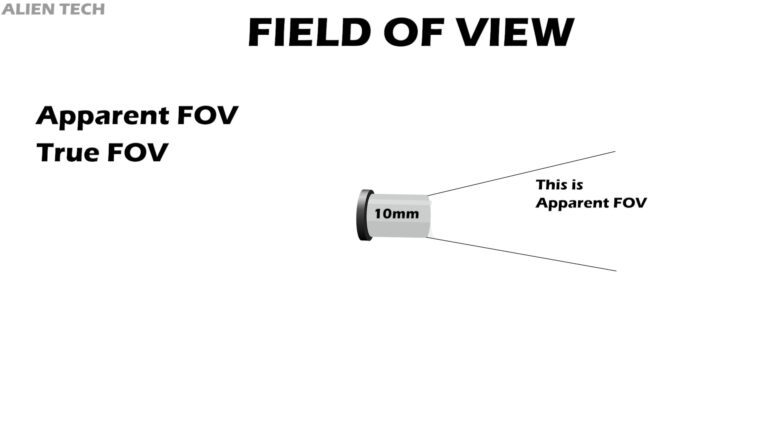
So, you need to calculate the ‘True field of view’. The true field of view is the width of the view when it is paired with a telescope. That’s why it is called the true field of view.
A large apparent field of view means more sky width you can see. Simple eyepieces usually have 40-45 degrees of apparent field of view. While the wide-field design has more than 60 degrees of apparent field of view.
Sometimes, more important is the true field of view. Any combination of telescope and eyepiece has a specific true field of view. The true field of view quantifies the amount of sky visible in a particular scope with a particular eyepiece.
Example of the field of view
For example, if a particular telescope/eyepiece combination provides a 1° True Field of view. Then two stars that are at a distance of exactly 1° will just fit into the eyepiece field, with each star on opposite edges of the field.
You get a true field of view by dividing the apparent field of view by the magnification of the eyepiece.
For example, consider a 20 mm-focal-length eyepiece of 50° apparent field of view in combination with a scope of 1,000 mm focal length. The magnification will be 50X and the true field of view will be 50°divided by 50X is 1 degree.
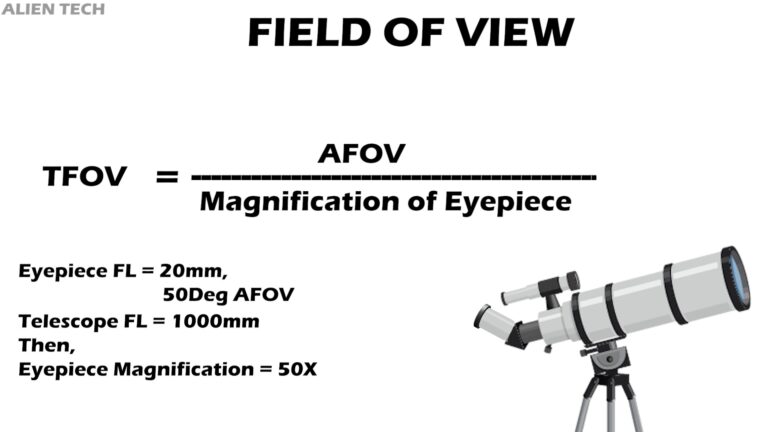
Here is an example of how your True field of view. You can see the ORION NEBULA with a telescope of 1000mm focal length and three different eyepieces. Each eyepiece has a 20mm focal length but a different apparent field of view of 50 °, 68 ° & 80 °. Each eyepiece gives the same magnification, but the eyepieces with the larger AFOV show a larger angular area of the sky.

Barrel Size
Eyepieces have barrel sizes to fit in the standard telescope focusers. The majority of the telescopes have a focuser size of 1.25-inch. So the most common size of the eyepiece is 1.25-inches. There are also large diameter 2-inch eyepieces that show more of the sky but 2-inch eyepieces are more expensive to produce than 1.25-inch models.
A telescope with a 1.25-inch focuser will accept only a 1.25-inch barrel size eyepiece & a telescope with a 2-inch focuser will accept only a 2-inch barrel size eyepiece. If you want to fit a 1.25-inch eyepiece on a 2-inch focuser then you will need an adapter.
While purchasing an eyepiece, do keep in mind the focuser size of your telescope, so that you can choose an eyepiece with the perfect barrel size.

Exit Pupil
The exit pupil is the diameter of the beam coming out of the eyepiece. It determines where you place your eye to view the entire field. Its measurement unit is millimeters. The larger the exit pupil, the brighter the image will be under low-light conditions.
The exit pupil is calculated by dividing the eyepiece focal length by the telescope focal ratio. Our eyes can shrink up to 0.5 mm and expand up to 7mm, so usually the exit pupil range is between 0.5mm – 7mm.
Exit pupil size is completely dependent on the individual. As you age the expansion of your pupil decrease so anybody who is above the age of 50 should limit the exit pupil to 5mm.
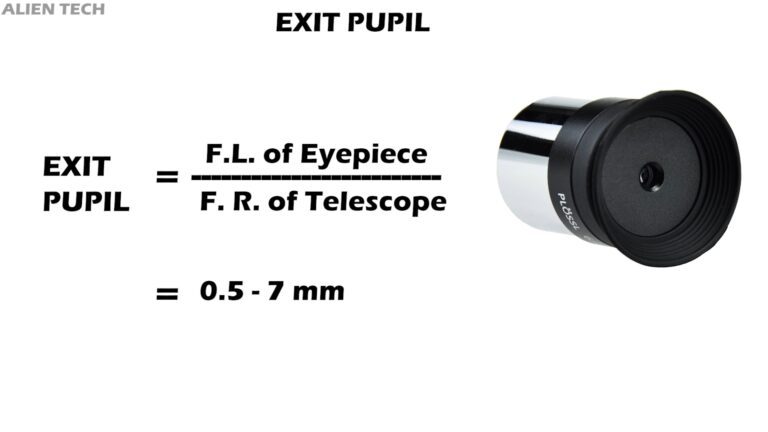
Barlow lens
If you want double magnification without buying a new eyepiece then you should consider buying a Barlow lens. A 2X Barlow will double the magnification and a 3X Barlow will triple it. Barlow lenses usually have a higher focal length so you will also get higher eye relief.
With the Barlow lens, you can get two different magnifications with one eyepiece. So Barlow lens one must have in their eyepiece set.


So that’s it, these are the things you should consider while buying a new telescope eyepiece. We hope this article helped you to understand the basic things to consider while buying an eyepiece. If you like our content please share it with someone who is curious about astronomy.

